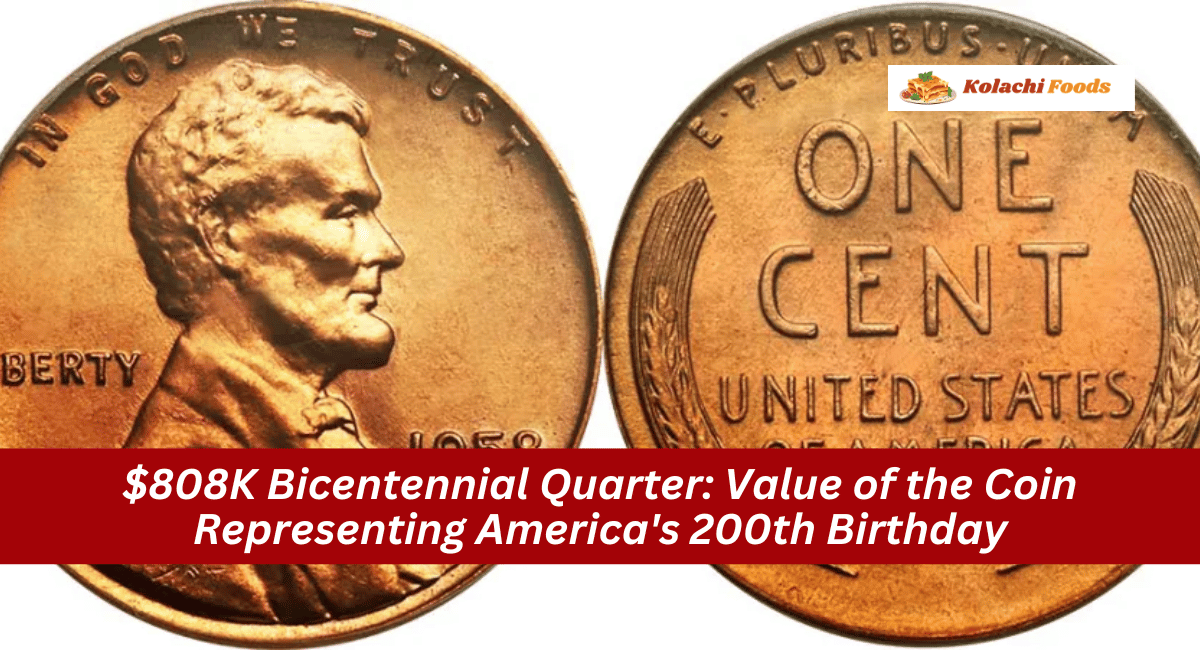The Bicentennial Quarter, minted in 1976, is one of the most iconic coins in U.S. history, representing the 200th anniversary of America’s independence. While most of these quarters remain in circulation and have little value beyond their face value, some rare editions have soared in worth.
Among these, one particular quarter fetched an impressive $808,000, making it one of the most valuable coins of its kind.
This special Bicentennial quarter, with its distinct design and historical significance, has captured the attention of collectors and historians alike. In this article, we will explore the different rare versions of the Bicentennial quarter that have gained considerable value over time.
1976-S Silver Proof Quarter
The 1976-S Silver Proof Quarter is a key part of the Bicentennial series. Struck for collectors, this quarter contains 40% silver, which sets it apart from the copper-nickel versions intended for circulation. The “S” mint mark indicates it was produced at the San Francisco Mint, known for its high-quality proofs.
What makes this coin highly desirable is its limited mintage and beautiful mirror-like finish. In excellent condition, it can command a price of thousands of dollars, especially in higher grades.
1976-D Double Die Obverse Quarter
The 1976-D Double Die Obverse quarter is another highly coveted Bicentennial coin. This variety features a minting error, where parts of the design, particularly the word “Liberty,” appear doubled on the coin’s obverse side. This error occurred during the striking process and significantly enhances the coin’s value among collectors.
These rare double die varieties can be worth tens of thousands of dollars, and when in perfect condition, they have been known to sell for even higher amounts. The uniqueness of the minting error is what makes this quarter stand out from other Bicentennial quarters.
1976 No Mint Mark Quarter
The 1976 No Mint Mark quarter was struck at the Philadelphia Mint and, as the name suggests, lacks a mint mark. While most Bicentennial quarters from Philadelphia have no mint mark, it’s the pristine, uncirculated versions of this coin that fetch high prices in the collectors’ market.
Even though it doesn’t have a silver content like the San Francisco version, the rarity of finding a flawless no mint mark quarter elevates its value significantly.
1976-S Type 1 and Type 2 Silver Proof Quarters
The 1976-S Type 1 and Type 2 Silver Proof Quarters are often sought after due to their distinct design variations. The Type 1 features bold, thicker lettering, while the Type 2 has more refined, thinner lettering. Both types are made of 40% silver, which adds to their appeal.
Collectors often look for these quarters in the highest grade possible, as proof coins in excellent condition hold much higher values. When preserved well, these coins can be worth thousands of dollars.
| Coin | Mint Mark | Composition | Unique Feature | Estimated Value |
|---|---|---|---|---|
| 1976-S Silver Proof Quarter | S | 40% Silver | Mirror-like finish | Up to $7,000+ |
| 1976-D Double Die Obverse | D | Copper-Nickel | Doubling in “Liberty” | Tens of thousands |
| 1976 No Mint Mark Quarter | None | Copper-Nickel | No mint mark, pristine condition | Thousands |
| 1976-S Type 1 Silver Proof | S | 40% Silver | Bold, thick lettering | Thousands |
| 1976-S Type 2 Silver Proof | S | 40% Silver | Refined, thin lettering | Thousands |
The Bicentennial quarter is more than just a commemorative piece; it’s a symbol of America’s rich history and the celebration of its 200th birthday. For coin collectors, the hunt for rare and valuable versions of this iconic quarter can lead to significant financial rewards. Whether it’s a silver proof or a double die error, these coins are highly sought after in today’s market.
FAQs
1. What makes the Bicentennial quarter valuable?
Rare editions such as silver proofs, double die obverse errors, or coins in pristine condition are worth significantly more than face value.
2. How can I identify a 1976-D Double Die Obverse quarter?
Look for doubling on the obverse side of the coin, especially in the word “Liberty.” This minting error increases the coin’s value.
3. Are all Bicentennial quarters made of silver?
No, only the 1976-S Silver Proof quarters contain 40% silver. Most Bicentennial quarters are made from copper-nickel and were intended for circulation.
4. Why is the 1976 No Mint Mark quarter valuable?
Though common, flawless, uncirculated versions of this quarter are highly valuable due to their scarcity in mint condition.
5. Where can I sell rare Bicentennial quarters?
You can sell rare coins through reputable coin dealers, online auctions, or at coin shows, where collectors are looking for these valuable pieces.
READ MORE: The $222 Billion Coin Hunt: Reasons You Should Look for Two Rare Bicentennial Quarters

